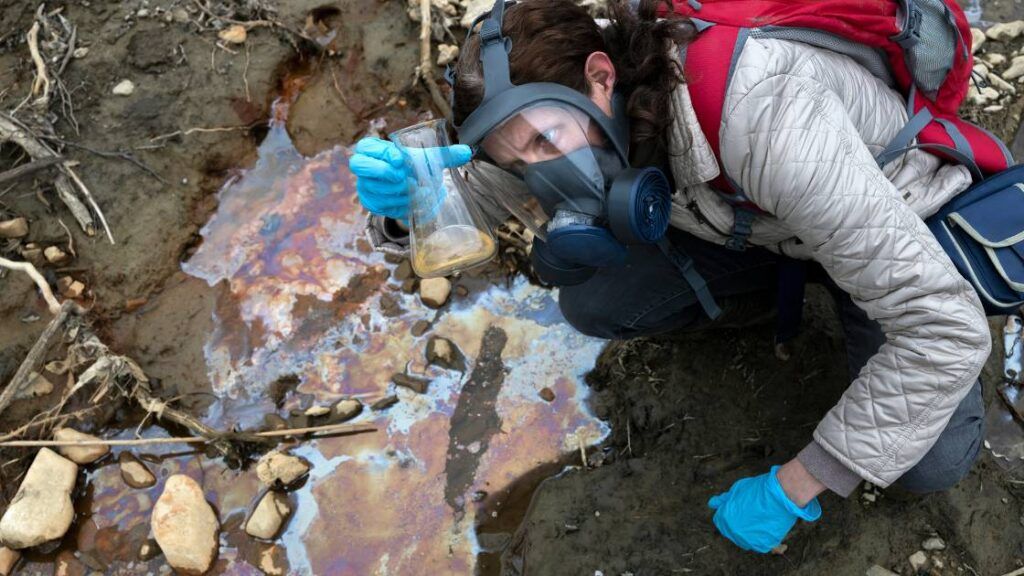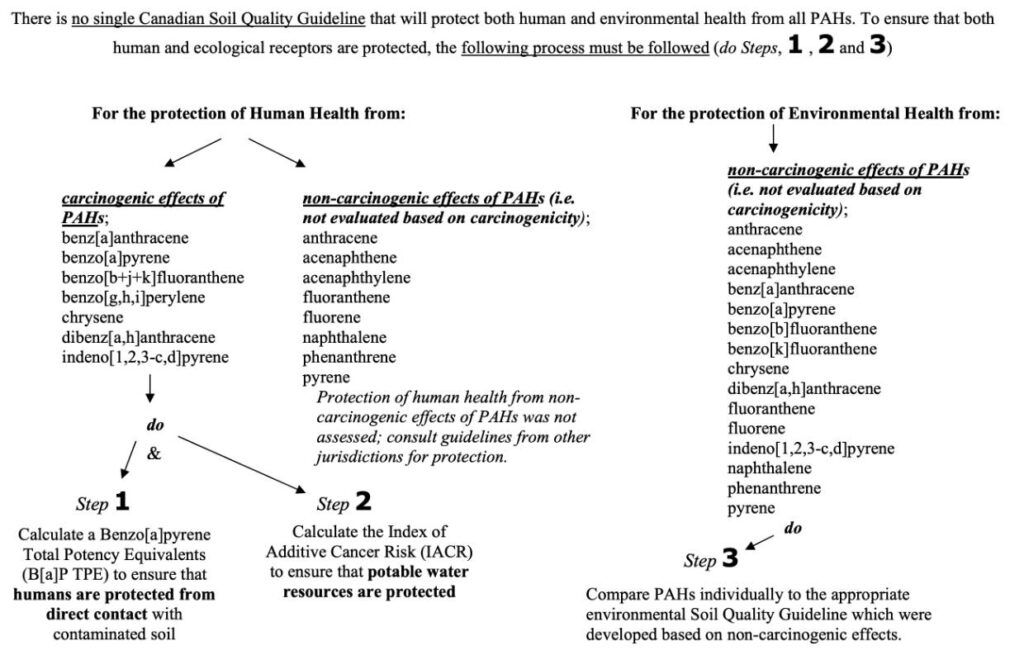The Canadian Soil Quality Guidelines provide a comprehensive framework for addressing soil contamination by Polycyclic Aromatic Hydrocarbons (PAHs) to protect environmental and human health. The full guidelines can be found here: Canadian PAH Guidelines.

Key steps in applying Canadian Soil Quality Guidelines for Polycyclic Aromatic Hydrocarbons (PAHs) at a contaminated site include:
Step 1: Identification of PAHs
Recognize the presence of PAHs, focusing on their non-carcinogenic and carcinogenic effects. Key PAHs of concern due to carcinogenic potential include benz[a]anthracene, Benzo [a]pyrene, benzo[b]fluoranthene, benzo[j]fluoranthene, benzo[k]fluoranthene, chrysene, dibenz[a,h]anthracene, benzo[g,h, i]perylene, and indeno[1,2,3-c,d]pyrene.
Step 2: Calculate Total Potency Equivalents
For human health protection, calculate the Benzo [a]pyrene Total Potency Equivalents (B[a]P TPE) to assess the combined carcinogenic potential of the PAHs present in the soil. This involves multiplying the concentration of each carcinogenic PAH by its Potency Equivalence Factor (PEF) and summing these values.
Step 3: Assess Additive Cancer Risk
Evaluate the Index of Additive Cancer Risk (IACR) to protect potable water resources. This step assesses the potential threat to potable groundwater quality from the leaching of carcinogenic PAH mixtures from the soil by calculating a hazard index for each PAH and summing these for the entire mix.

Important Considerations: Soil Quality Guidelines for Polycyclic Aromatic Hydrocarbons
- For soils contaminated with coal tar or creosote mixtures, apply a safety factor of 3 to the B[a]P TPE concentration before comparison with the Soil Quality Guideline for Direct Human Contact (SQG DH) to account for the carcinogenic potential of alkylated and other PAHs present.
- There is no single guideline that protects both human and environmental health from all PAHs. Therefore, the process must involve assessing hazards to human health from carcinogenic effects (Steps 1 and 2) and environmental health from non-carcinogenic effects (Step 3).
- Consultation with guidelines from other jurisdictions may be necessary for PAHs not covered by the Canadian guidelines or for non-carcinogenic effects.
Applying the Canadian Soil Quality Guidelines for PAHs requires a comprehensive understanding of the types of PAHs present at the site, their potential human and environmental health impacts, and a calculated approach to evaluating their combined effects. This ensures both human and ecological receptors are adequately protected against the risks posed by soil contamination with PAHs.
You can view the full document on Canadian Soil Quality Guidelines for Polycyclic Aromatic Hydrocarbons (PAHs) at the ESdat website
Pre-compiled Library of Global Regulatory Guidelines for Environmental Standards on ESdat
The ESdat’s Environmental Standards page provides a comprehensive overview of a pre-compiled library of regulatory guidelines for environmental standards. It covers various regional guidelines, including the United States, Canada, Australia, New Zealand, and the United Kingdom.
The ESdat platform adds custom environmental standards as needed and offers real-time alerts for guideline exceedances. The guidelines cover various environmental parameters, such as pH, hardness, and depth & matrix dependencies. ESdat’s library is designed to help users compare their laboratory and field results against a comprehensive set of regulatory guidelines through tables, maps, graphs, and more, thus facilitating compliance with environmental standards across different jurisdictions.
Related Articles to Polycyclic Aromatic Hydrocarbons Guidelines
What are Canada’s environmental guidelines and policies?
Canadian Soil Quality Guidelines for PAHs: Protecting Environmental and Human Health






